Looking around at the mounts, skins and heads that decorate the walls and furniture of my home – honouring animals harvested – brings back memories of the incredible adventures and majestic sights experienced on these hunts. Each displays valuable trophy characteristics. Each represents a good hunt and worthy challenge. The headgear of a mature white-tailed deer buck denotes a prime animal, capable of fighting other prime individuals, earning his right to pass on his genes through the mating process – a worthy opponent in the challenge of hunting. These trophies represent all the traits of survival, toughness and beauty that hunters admire and respect about the game species they spend countless hours finding, watching and stalking. Less obvious factors that accentuate the difficulty – and thereby, increasingly test a hunter – stem from the multiple years the beast has survived and the cunning acquired each year that allowed him to reach the next.
With greater knowledge as hunters, and with a growing conservation mindset, we’re now putting more trophy value on the age of the animal in addition to the physical traits determined largely by genetics and nutrition. Lindsay Thomas Jr, chief communication officer for the National Deer Association in the United States, actually hangs the lower jawbone showing wear on teeth – a representation of a buck’s age – as part of his mount of the white-tailed deer he harvests. Similarly, placing value on a white-tailed deer’s age rather than solely their Douglas score, New Zealand white-tailed deer legend John Delury and the Stewart Island Whitetail Research Group have developed a database for Kiwi hunters to learn from and in which to save age information about tooth cementum of white-tailed deer harvested, enabling us hunters to learn more about this special deer species.
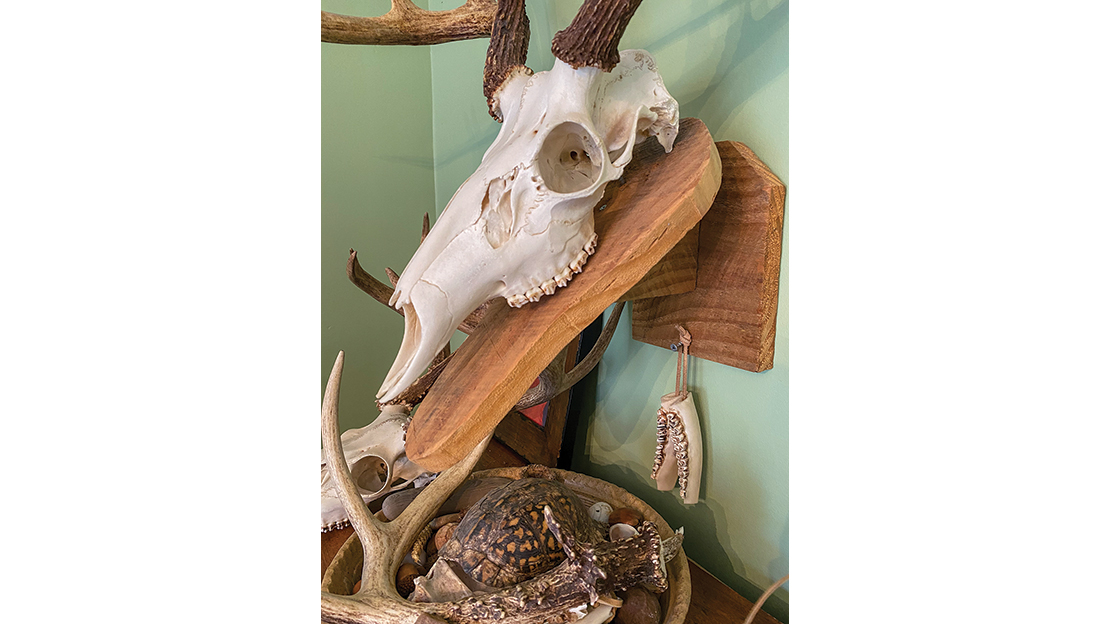
Tooth cementum ageing counts cementum rings formed in the tooth over winters. However, scientific studies show varying accuracy in this method with greater potential for error in areas with less distinct winters, like Stewart Island. Regardless, from learning the cementum annuli count and studying the wear on the teeth themselves, a good idea of age can be formed to help hunters have a better idea of the animals harvested and to help us learn more about the life history of white-tailed deer and the population as a whole.
Management
Along with providing another aspect on which to place value of an animal targeted, ageing animals is important for good management of populations for their health and trophy potential. In a relatively small and isolated population, such as the Stewart Island white-tailed deer herd, hunters’ decisions can have a large impact on the quality of the individuals in the population. Aspects of the antlers, such as length, spread, mass and tine numbers, are extremely heritable traits, and therefore, hunters have a key opportunity to dramatically affect the quality of the white-tailed deer on Stewart Island. If everyone who visits Stewart Island and falls in love with the cunning, secretive deer takes responsibility for the herd’s management, there’s no telling the quality of trophies we could see in the future.
As with other deer species, white-tailed deer are difficult to age on the hoof. Arguably, they’re even more difficult because many hunters only get glimpses through the thick bush. The trip itself to Stewart Island is a rare and special occasion for most. The less accessible nature of the hunt, as well as the limited viewing picture of the secretive deer in the bush on the hunt, makes familiarising this species in the mind’s eye more difficult. Even the top white-tailed deer experts in the US have trouble ageing white-tailed deer on the hoof correctly as a study published in Wildlife Society Bulletin shows. In this study, wildlife professionals who commonly employ ageing-on-the-hoof techniques to make white-tailed deer management decisions aged known white-tailed deer bucks from 1½ to 7½ years old with an average of 36% accuracy (the minimum was 16% and maximum was 56%). These bucks were in antler over winter. In the spring and summer months, ageing white-tailed deer can be even harder because older animals can look young.
The best advice for ageing white-tailed deer is to get an idea of the population before targeting trophies. Save younger bucks for a future trip and work to harvest at least mature trophy animals.
Take time to study the jawbone of harvested animals to learn from your kills. Sending in teeth for cementum ageing will help hunters establish their database to learn more about this Stewart Island population. Clean jaws from both sexes and all ages can be sent wrapped in newspaper to Stewart Island Whitetail Research Group, PO Box 1588, Invercargill 9840 – this helps to grow the hunters’ database and to learn how to better manage the herd.
Many Kiwis believe if money’s been invested, as many Stewart Island trips require, it’s their right to shoot any trophy animal. However, the opportunity available to make a huge impact on the population should motivate hunters to let young bucks walk so we can maintain and even improve the trophy potential of this herd for the future.
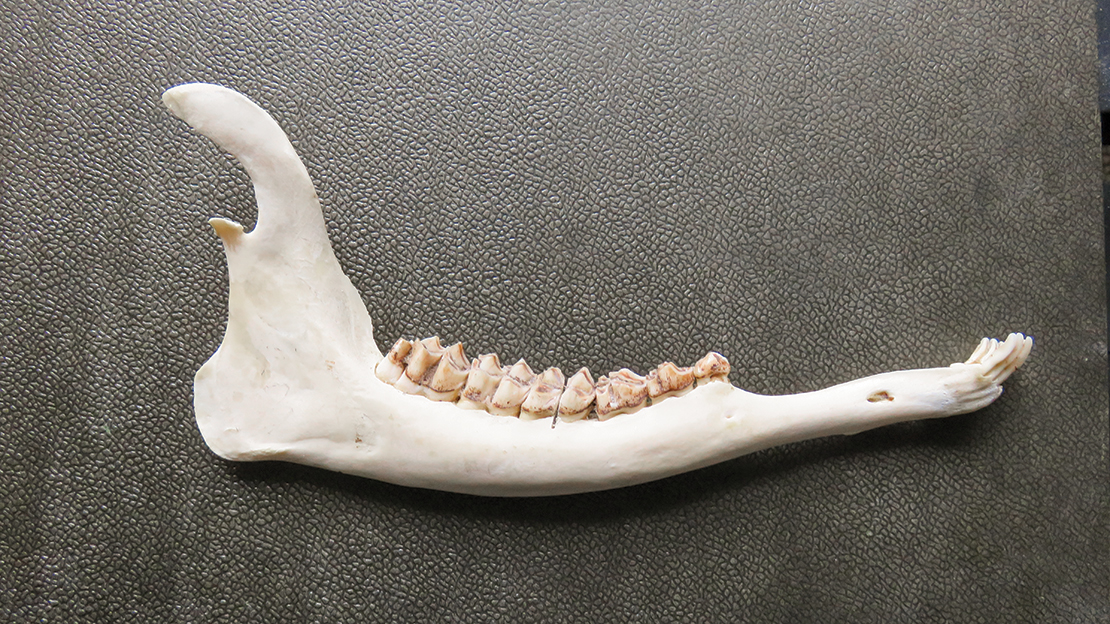
Age Categories
As the previously mentioned study shows, trying to age white-tailed deer on the hoof is challenging. It’s somewhat easier to place this deer into brackets. To help us make the best decisions about a white-tailed deer’s age, we’ll categorise them as young (until 4½ years old), mature (4½ through to 6½ years old), and old (7½ and older) – this is based on research that shows the majority of white-tailed deer reach their antler maximum at 5½ years of age and begin declining both in antlers and in muscle mass by 7½.
We use ½-year increments referring to the age they’ll be when their antlers are hard during their late fall rut and following winter.
It’s a shame to harvest a white-tailed deer trophy buck during the spring and summer when their antlers have dropped or are in soft velvet. Additionally, as previously mentioned, it’s harder to age deer based on their body and face during this time.
We need hunters to play their part in maintaining a healthy population of deer on the island. Hunters are white-tailed deer’s only predators, so make sure to harvest and document meat animals as well. If we can take responsibility for their management with our goals in mind, it’ll save DOC from culling blindly to maintain healthy populations of deer and natives.
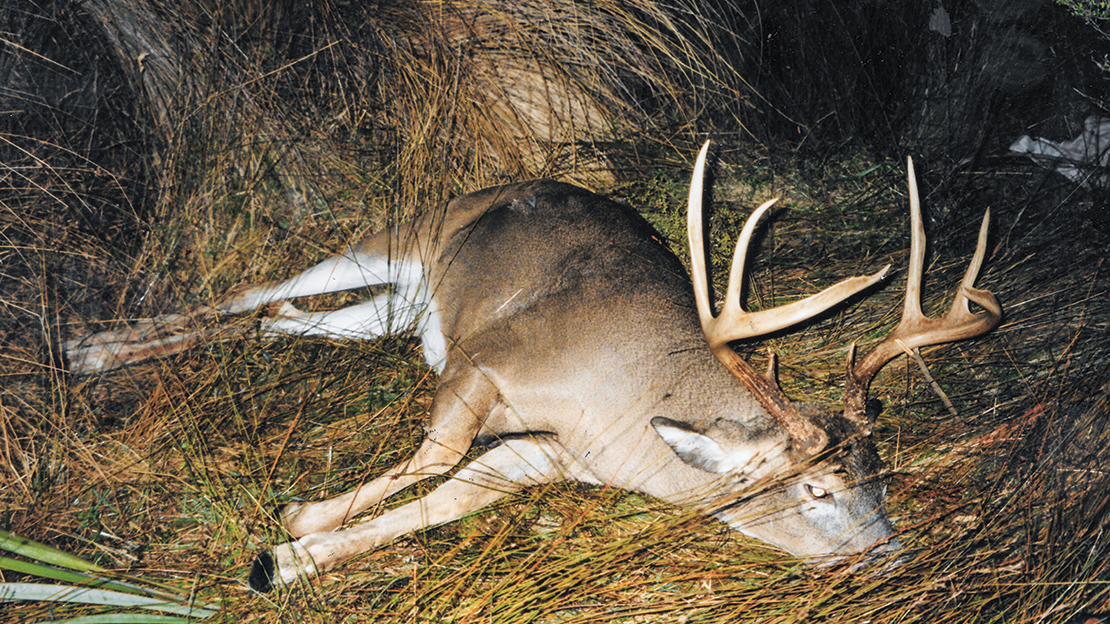
Antlers
Similar to other species in earlier deer-ageing articles, ageing a buck by its antlers is not advised because, although antlers improve with age up until a deer’s fifth year, antlers also vary greatly due to genetics and nutrition. There’s much overlap between the age categories in antler size. Also, very old deer will regress in their racks, growing skinnier and fewer tines, resulting in racks more often associated with a young animal. With all John Delury’s years of experience hunting Stewart Island white-tailed deer, his best rack was a 7-year-old buck, although his oldest was 9 years old.
From a discussion with a white-tailed deer wildlife biologist, Jordan Dyal, I discovered the aspect of a white-tailed deer’s rack most correlating to age is its main beam length. Florida in the US has similar sized white-tailed deer racks to Stewart Island. A main beam length of 19 inches eliminates most 3½-year-old white-tailed deer and younger. However, some individuals can still have outstanding genetics and receive enough nutrition to support growth of a long main beam at a young age. It’ll be interesting to learn more from John’s database of Stewart Island white-tailed deer to see if a similar trend in main beam lengths exists.
As white-tailed deer age, antler deformations also become more prevalent. Wavy tines can be seen in old animals. This is not telltale, however, of an old animal, because injury to antlers in velvet or to the deer itself can also cause abnormalities in the antlers.
Research on white-tailed deer in the US shows that in animals over 7 years old, antlers start declining. Data from the Stewart Island Whitetail Research Group shows that many deer in our ‘old’ category by cementum ageing were only 4-pointers or spikers. This could be from age-related regression, but also possibly from hunters allowing genetically inferior racked bucks to survive.
Older bucks also tend to drop their antlers earlier and grow velvet and harden velvet earlier than younger animals. If hunting early fall, animals still in velvet may be younger than those that have already shed their velvet.
While not indicative, cues from antlers can help us understand the large picture of age when considered with other aspects of a buck’s body, face and behaviour.
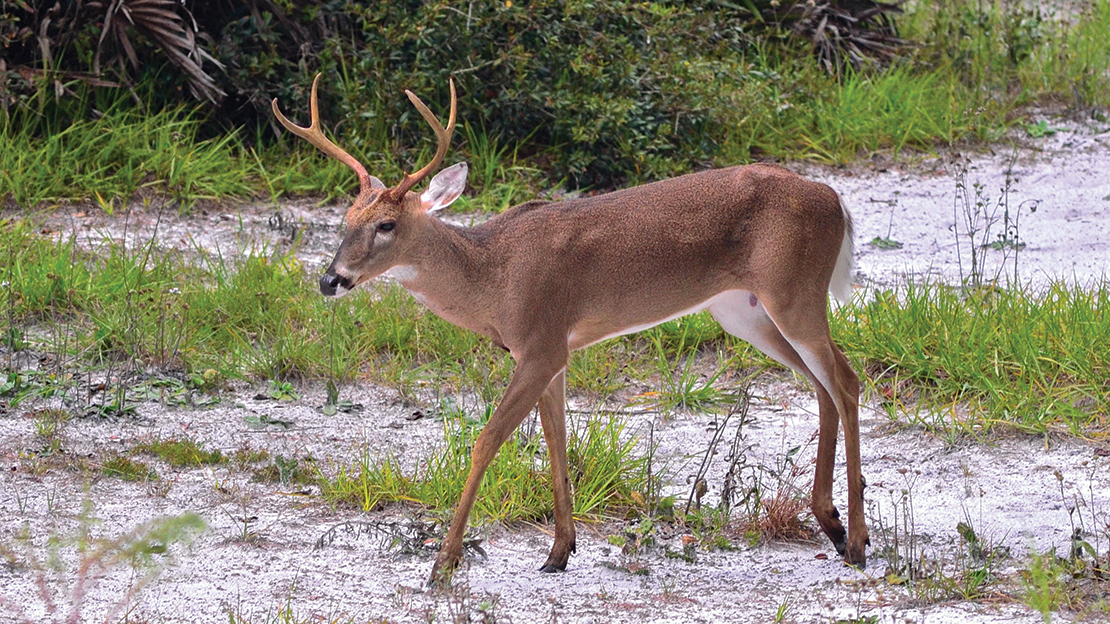
Body
With white-tailed deer, as well as with other deer species, their bodies are the most informative feature when assessing age. When hunting white-tailed deer bucks on Stewart Island, often bush limits how much of the deer is visible; because of this, several aspects of assessing the body will be evaluated to help categorise age. That being said, the more of the body evaluated, the more accurate the estimation of the buck’s age. When possible, take time to study the entire animal and consciously note attributes hinting at age to make the best decision on that hunt as well as to gain knowledge for future hunts.
Most consistent for ageing young and mature animals is where the animal’s neck meets its chest. Young white-tailed deer have slim, short, narrow necks that tie into the shoulders high on their chests. As they age, their necks merge with their chests lower and lower. By 3 years of age a buck’s neck ends almost at the bottom of his chest, but by 4½ years, when we classify a buck as mature, the neck should meet the bottom of the chest with no breaks. By 5 years of age, this low connection thickens, making the deer appear more deep-chested, and this mass is maintained throughout their body. These prime bucks continue adding to their bulk and build-up of muscle and mass. When bucks reach the ‘old’ category, their muscle and weight start to go backwards, but their frame remains the same as in their prime. This causes loose skin and wrinkles under their chin and down their neck. A buck with sagging skin under its chin or chest is likely an old, declining deer.
Keep in mind when assessing bucks’ necks that they swell significantly during the fall when they’re actively rutting. By 3½ years old, bucks’ necks already show significant swelling; this becomes more obvious in their prime years, continuing into their old age. As previously mentioned, bucks can appear younger outside of the rut when their neck is less swollen and bulky.
Another key to assessing the age of white-tailed deer by their body is the balance of their composition. Young bucks’ (under 2 years old) hind ends appear larger because their shoulders are still so underdeveloped. By 2½, their shoulders generally have caught up to their hind end and they appear balanced but scrawny, thin in their barrel with their gut tucked up into their hindquarters. By 3 years old, however, bucks’ shoulders appear heavier because they have more muscling. By 4½ years of age, balance begins to return as the hind end becomes more muscled and developed, contrary to two years prior because bucks are now filled out and have a thicker appearance overall. A balanced body with thick mass is often indicative of at least a mature buck. By 5½ years of age, the balance is maintained, but the belly fattens further and the depth in the brisket is carried back to the hind end.
Analysing the overall body, along with balance, the angles and general appearance can shed light on an animal’s age classification. Young animals have more defined angles. By 3 years of age, a buck will appear very athletic and strong, but individual features will still be defined. By 4½ years, the bucks become more streamlined, with less defined junctions and a thicker appearance. Bucks of 5½ and 6½ years of age are very similar. As these mature animals reach their prime, the bulk in their previously streamlined appearance can cause wrinkles in their necks, sagging of their stomachs, and even sway their backs slightly. Past their prime, as their muscles begin declining, a swayed back and loose skin over an otherwise solid frame manifests their old age. Very old bucks extremely regressed in muscle may even have a body structure at first appearing to be that of a younger animal. However, even on a regressing buck, the neck ties in to the bottom of his chest and his back remains swayed. Loose skin, scars and an old appearance, too, hint at an old, waning buck and differentiate his lean frame from that of a youthful animal.
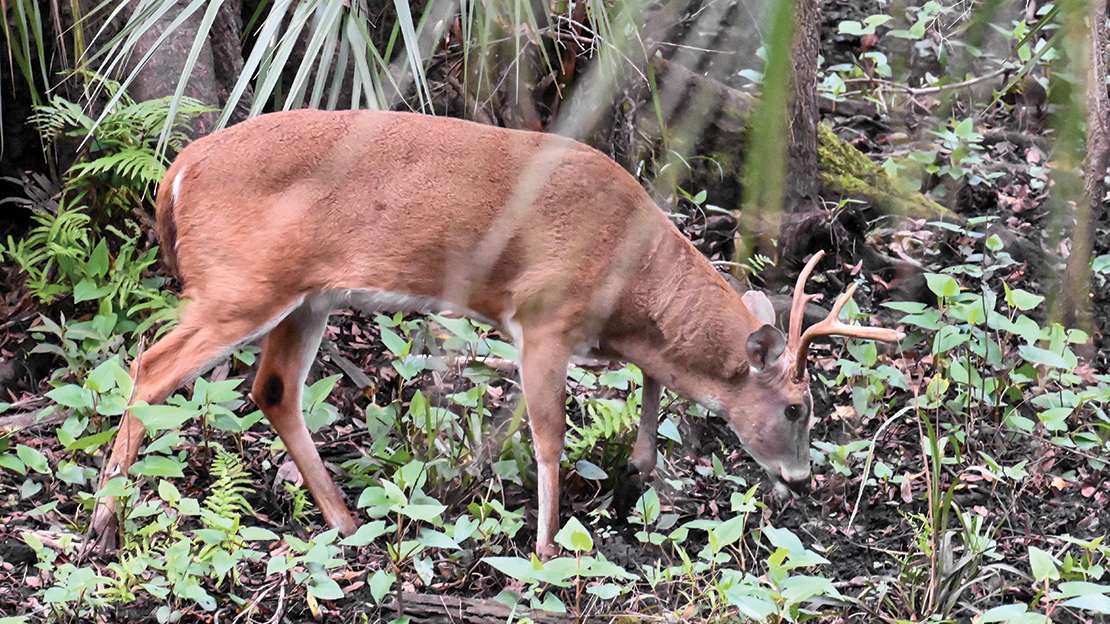
If you’re able to view the entire animal, the length of legs in comparison to the body can also help shed light onto potential age categories. Young animals appear to have longer legs. At 3½ years of age, a buck’s legs generally seem proportionate to an athletic-looking body. When an animal reaches mature ages, the legs begin to appear short and small for an overdeveloped upper body.
During the rut, tarsal staining is a great indicator of a buck’s maturity. Typically, this staining, caused by activity of rutting bucks, does not begin to appear as a dark stain until after the animal turns 3½ years old when, as part of active rutting behaviour, he begins rubbing the tarsal glands and urinating over them when using a scrape. Even 1½-year-old deer can have breeding success during the peak of the season when so many does are in heat at the same time because, rather than defending groups of females, white-tailed deer bucks individually chase hot does. Thereby, even young spikers can get lucky. Bucks don’t exhibit rutting behaviours until they reach 3½ years of age. By 5½ years of age, the staining is so strong that it’s actually running down the back of his legs. If a stain is running down a buck’s legs, it’s a dead giveaway that he’s at least a mature animal. What stood out to Lindsay when evaluating his oldest buck, aged at 6½ years by the wear on his molars, were the large and black-stained tarsal glands and dark stains running down his legs.
Face
While discerning a mature from a young buck is most easily accomplished by clues in the body, distinguishing between mature and old animals can be more difficult. Adding to signs of maturity from the body, the face can indicate older, declining animals through loose or sagging skin, especially around the eyes and under the chin. These features also help confirm age when classifying a body that could either be a young deer or an older deer going backwards.
When discriminating between young and mature animals, it’s important to note that by 4½ years old, bucks start to have some grey hair on their faces and have smaller-looking eyes.
While an animal’s age shouldn’t be categorised on facial features alone, studying a buck’s face for signs of age can help confirm age beliefs from their body or can be used as a tiebreaker when cues from their body, behaviour and antlers leave you questioning.
Behaviour
White-tailed deer bucks don’t hold females or territories during the rut, but rather cover distances in search of hot does, allowing bucks of any age category to have success breeding.
However, both in and out of the rut, whenever multiple bucks are together, generally dominance equates to age. Hair standing on end and head lifted towards another deer, especially if the ears are back, are signs of dominance, usually suggestive of an older animal relative to the deer being dominated. Submissive postures, such as head down and ears forward can express a younger deer.
When bucks are in pairs or small groups during the spring and summer, these behaviours can point to the older deer, but cannot alone help you place them in an age bracket.
Young | Mature | old | |
ANTLERS |
|
|
|
face |
|
|
|
body |
|
|
|
BEHAVIOUR |
|
|
|
Movement
White-tailed deer are very sly, nimble deer. Their movement is so quiet and ghostly in the bush that all could seem young and lithe.
However, as a deer ages and their upper body gains such significant mass over their legs, their movement seems stiffer than that of a young 3½-year-old, which appears much more athletic and agile.
Again, it would be impossible to age an animal on its movement alone, but noting this can help with trickier decisions. Learning to deliberately consider a buck’s movement will help you subconsciously recognise signs of young or aged animals later down the line.
Conclusion
The challenge of ageing white-tailed deer is one of the reasons I love hunting; it’s not always one defining feature, such as black, running tarsal-gland stains, but often an accumulation of clues from limited glimpses and angles – subtleties that require both recognition and judgment. By being more aware of each and every aspect and indication of age in hunting scenarios, a more accurate picture of the buck’s age will form. “Look for a preponderance of evidence,” Lindsay Thomas advises, “It’s an art, not a science, and it’s not always going to all line up.”
Arming yourself with information and consciously evaluating animals and assessing aspects of their antlers, body, face, behaviour and movement in relation to age will aid in the art, maturing it to where it almost becomes second nature. Following up with the jawbones of animals harvested will help you learn from your appraisals on the hoof. Learn to select more worthy, aged trophies, and play your part in shaping the future of Stewart Island white-tailed deer.

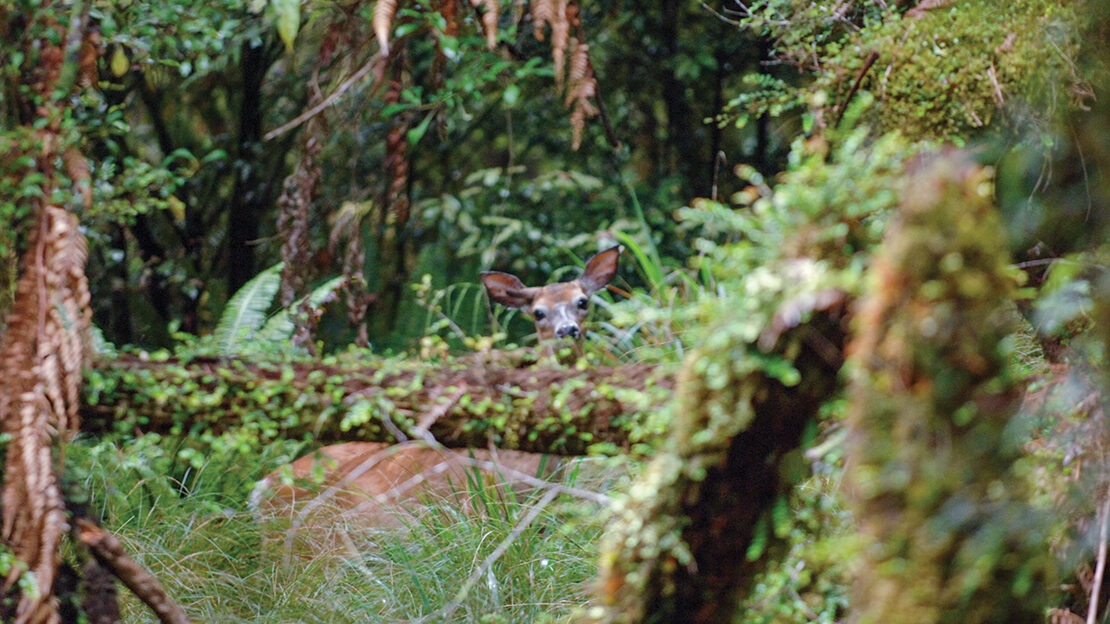
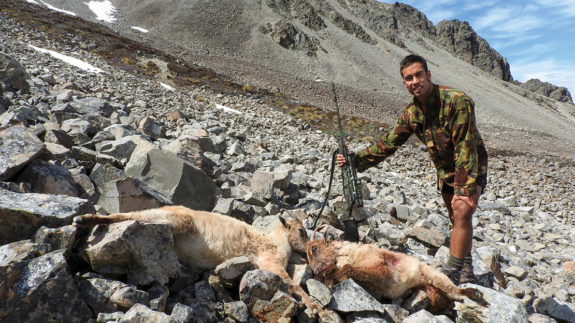
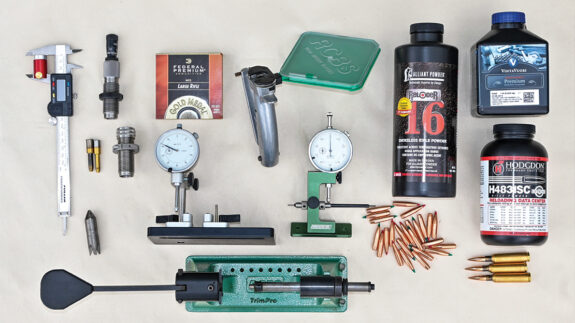

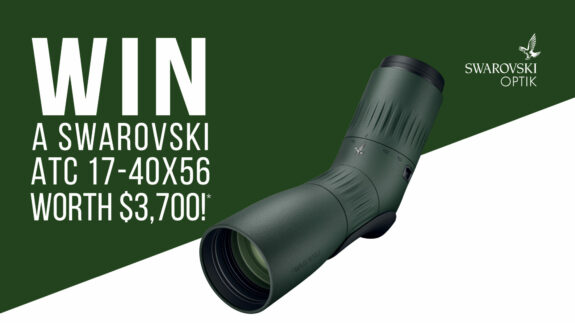
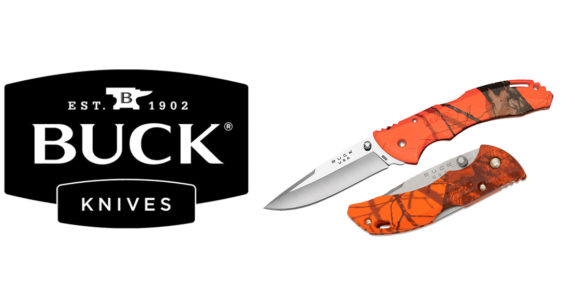
SHARE YOUR BEST PICS #NZRODANDRIFLE